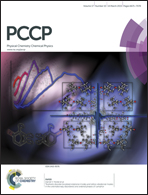Towards high refrigeration capability: the controllable structure of hierarchical Bi0.5Sb1.5Te3 flakes on a metal electrode
Abstract
The refrigeration capability of a thermoelectric device is dictated by interfacial effects and the figure of merit ZT, which govern the contact resistance and the Carnot efficiency for heat conversion. Here we report a controllable (110) oriented Bi0.5Sb1.5Te3 film grown on a Cu film electrode. The hierarchical Bi0.5Sb1.5Te3 film is composed of tens of cactus like flakes that have a (110) oriented backbone and abundant 50–80 nm branches in the (015) direction. The lattice mismatch of the (110) oriented Bi0.5Sb1.5Te3 to the Cu electrode is estimated to be approximately 2.4%, which implies a decreased interfacial dislocation density and formation of fewer interfacial defects leading to low contact resistance (1.0 × 10−9 Ω m2). The enhanced out plane ZT ≈ 0.73 is calculated from the in plane properties. Hence a maximum heat-flux pumping capability of 138 W cm−2 can be obtained for Tc = 400 K and the corresponding temperature difference is 6 K. Our work indicates that the control of the metal-semiconductor interfacial structure is an efficient approach to improve the refrigeration capability.


 Please wait while we load your content...
Please wait while we load your content...